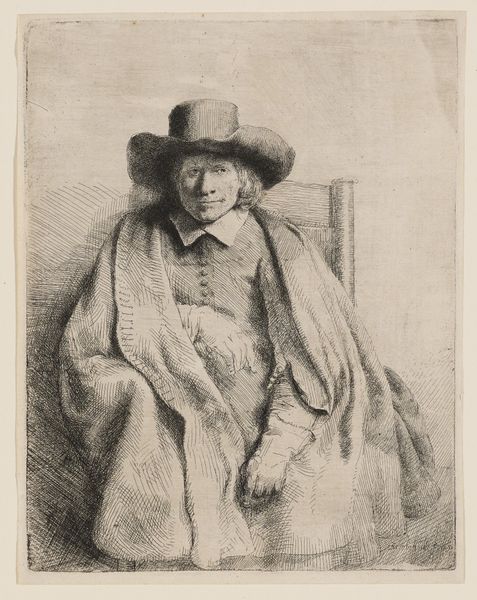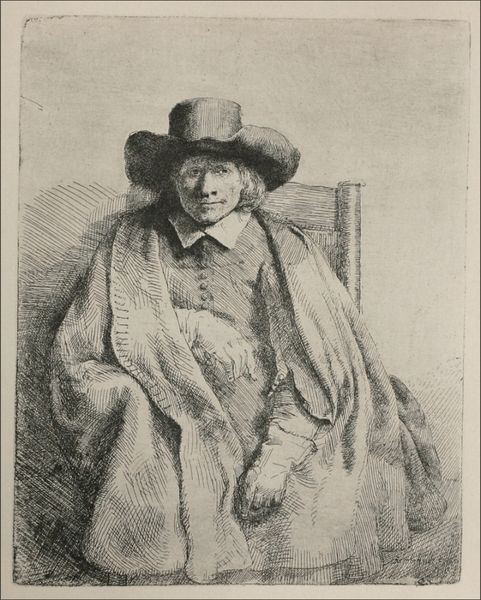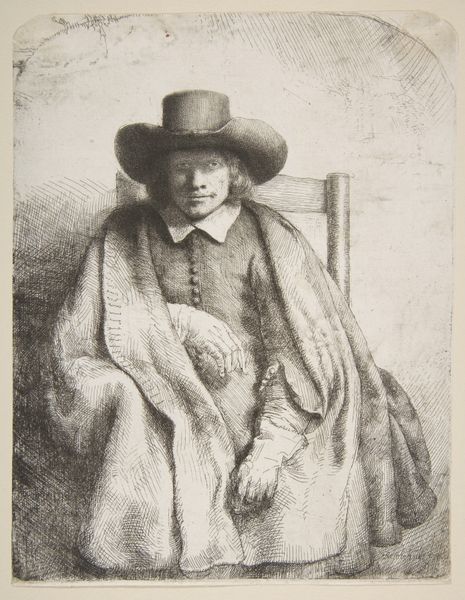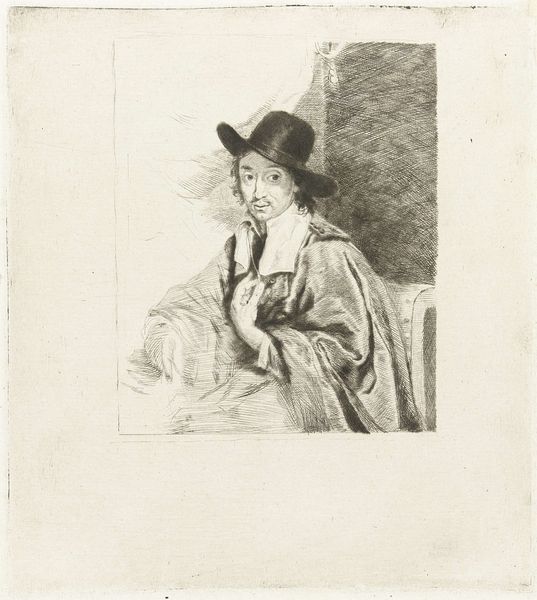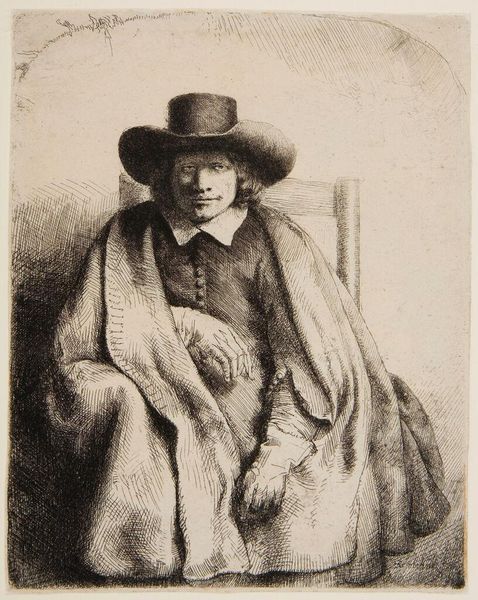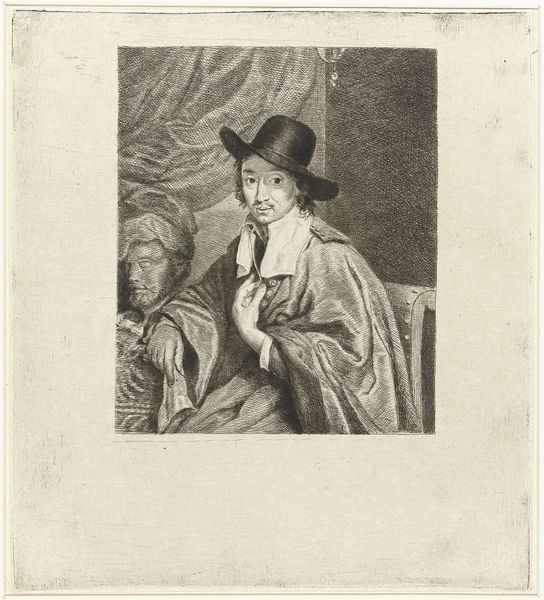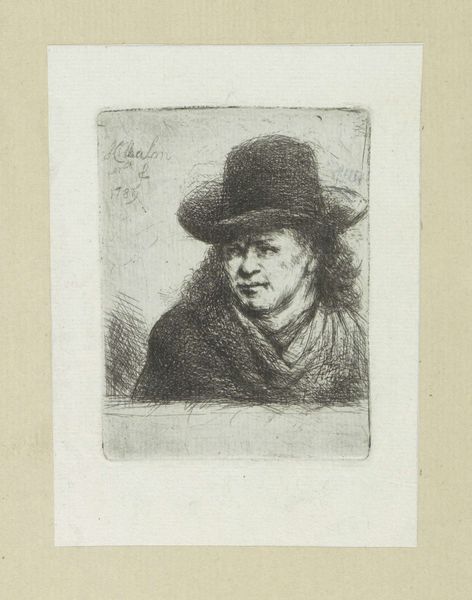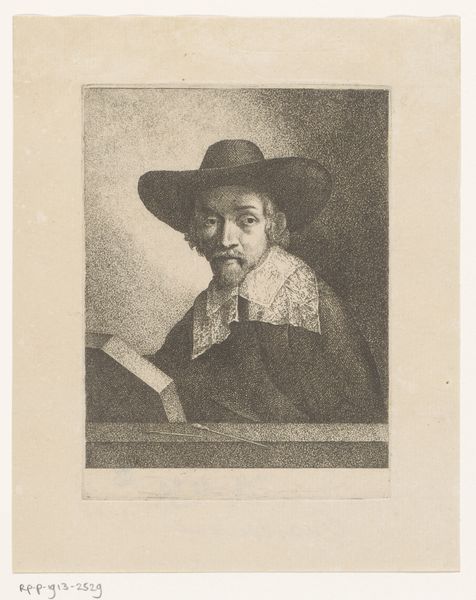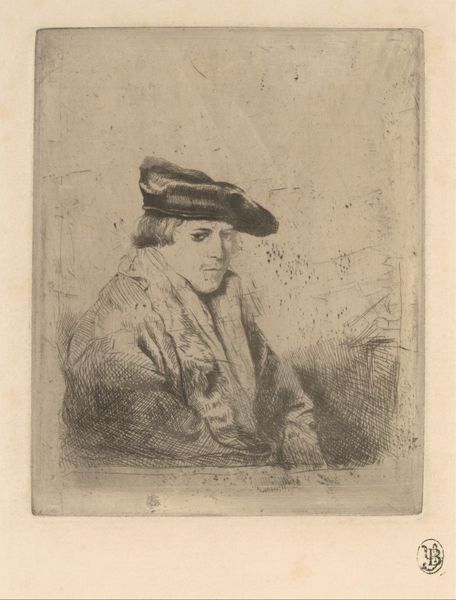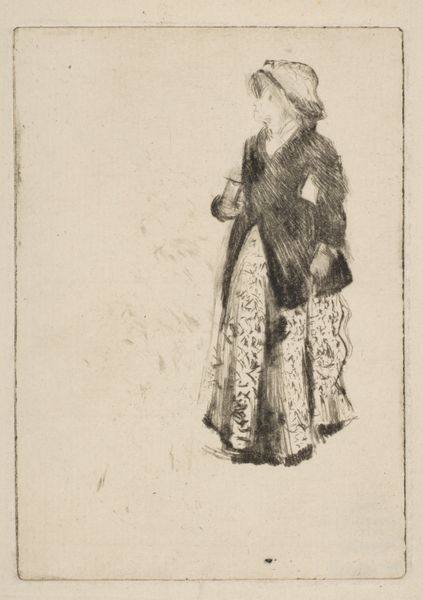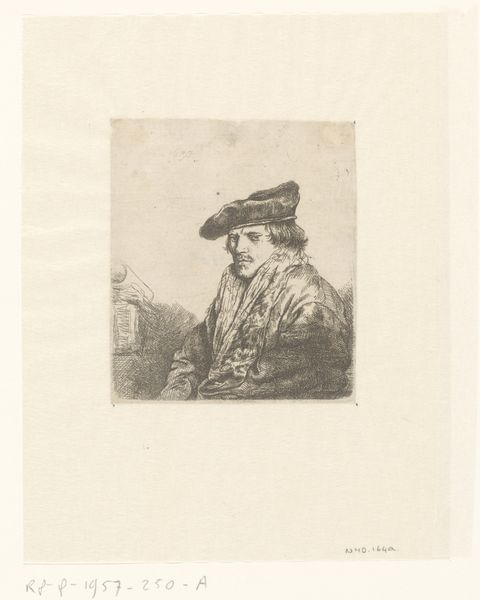
print, etching
#
portrait
#
baroque
#
dutch-golden-age
# print
#
etching
#
portrait drawing
Dimensions: height 207 mm, width 161 mm
Copyright: Rijks Museum: Open Domain
Curator: What a striking image. We're looking at Rembrandt van Rijn's "Portrait of the Print Seller Clement de Jonghe," an etching and drypoint work housed here at the Rijksmuseum. Its printing date ranges from 1651 to sometime around 1808. Editor: It's incredibly somber. The tones are muted, and the man's posture is weighted, almost defeated. The cloak seems to swallow him whole. Curator: Well, the process of etching allows for incredible detail and texture. Notice how Rembrandt uses line variations to depict the fall of light on the cloak, almost transforming a common piece of attire into a sculptural element that signifies social status. And consider Jonghe himself. As a print seller, he was a crucial figure in the dissemination of art. His very livelihood depended on the market and consumption of images like these. Editor: Yes, but it's fascinating to consider how Rembrandt’s representation of him here reflects the socio-economic role of art dissemination at the time. Clement de Jonghe was integral in distributing art. What does this image communicate about the public role of prints? It raises questions about how art was accessed and consumed in 17th-century Dutch society. Did the print seller have any impact on subject matter for sales' sake? Curator: Indeed. Also, it’s interesting to ponder the power dynamic here: Rembrandt, the celebrated artist, immortalizing Jonghe, a figure more directly involved in the commercial aspect of art. It underscores the complex relationship between artistic creation, distribution, and the burgeoning art market of the Dutch Golden Age. The material – the etching itself – allowed art to become more democratized through increased production, yet social hierarchy prevailed even within its subject matter. Editor: A brilliant paradox! A printed image of the seller allowing him to reach more people. I keep thinking of the politics inherent in this kind of portraiture - who gets remembered and how are they being portrayed in a specific point in time? It certainly highlights the social currency embedded within even the art world. Curator: Looking at the etching this way adds a new dimension. I appreciate seeing it through that lens. Editor: It is good to revisit and reflect on all its cultural implications through history.
Comments
No comments
Be the first to comment and join the conversation on the ultimate creative platform.
